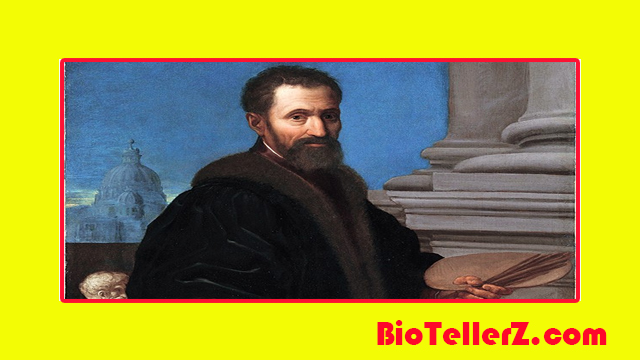
Michelangelo
Despite the compliments, Michelangelo was unsatisfied and requested that his assistant Ascanio Condivi draft a new brief (1553). This account, which was probably based on the artist’s own spoken remarks, shows him as he wanted to be perceived. Following Michelangelo’s death, Vasari offered a denial in a second edition (1568). Although academics frequently preferred the authority of Condivi, Vasari’s lively writing, the significance of his book as a whole, and its frequent reprinting in many languages have made it the primary source for popular perceptions of Michelangelo and other Renaissance artists. In addition to being more well-known than any of his contemporaries, Michelangelo’s fame led to the preservation of countless artifacts, including a large number of letters, sketches, and poems. Despite the significant advantage, in heated debates, only Michelangelo’s position is frequently known.
Early life
Michelangelo Buonarroti was born in Florence into a family that had been part of the city’s minor nobility for several generations but had since lost both its inherited wealth and status. When Michelangelo was born, his father, who only sporadically worked for the government, was Caprese, a nearby town’s mayor. But after a few months the family returned to Florence, where they had been permanently residing. Being an artist was seen as a social downgrade, so Michelangelo decided to become an apprentice relatively late, at the age of 13, perhaps after getting his father to agree to it. He served a three-year apprenticeship with Domenico Ghirlandaio, the most well-known painter in the city, but he left after the first year because, in Condivi’s opinion, he had learned everything there was to know.
Several drawings from this phase have survived, including replicas of works by Giotto, Masaccio, and earlier great painters of Florence, Ghirlandaio. Although there aren’t many documented instances, this kind of copying was common among apprentices. He was taken under the wing of the city’s ruler, Lorenzo de’ Medici, also referred to as the Magnificent, who saw his obvious talent. One of the poets and thinkers that Lorenzo surrounded himself with was Michelangelo. More importantly, he had access to the Medici art collection, which mainly consisted of ancient Roman statues. Contrary to popular belief, Lorenzo was not a significant patron of modern art; the works he did own were displayed in his home or served as political statements.
Bertoldo di Giovanni, a Medici friend in charge of the collection, was the closest thing Michelangelo had to a sculpture teacher, but he did not significantly imitate Bertoldo’s style or method. One of the two early marble works from the artist’s formative years that have survived, though, is an adaptation of a Roman sarcophagus design, and Bertoldo had already made a bronze version of one with a comparable design. This piece, which dates to around 150 AD, shows the Battle of the Centaurs. 1492). The action and force of the figures, more so than the Madonna of the Stairs (ca. 1860), give away the artist’s later interests. In 1491, Desiderio da Settignano created a delicate low relief that reflects modern trends among Florentine sculptors.
Adolescence Artist
After the David became well-known in 1504, the majority of Michelangelo’s work was made up of substantial endeavors. Although he was drawn to these challenging tasks, he refused to accept assistance, so the majority of these projects were impractical and never got finished. In 1504, he agreed to produce a sizable fresco to complete the one Leonardo da Vinci had just begun for the Sala del Gran Consiglio of Florence’s city hall. Both murals honored military triumphs for the city (Michelangelo’s was the Battle of Cascina), but they also displayed the distinctive skills of the celebrated artists of the area. In Leonardo’s design, Michelangelo’s active nudists and galloping horses represent soldiers stopping their swimming and climbing out of a river in response to an alarm. For both pieces, only duplicates and unfinished preliminary sketches remain. There was only one of the twelve marble apostles that the artist had intended for the St. Matthew hadn’t even begun. Michelangelo’s monumental strength and Leonardo’s organic, fluid movement are perfectly complemented by its writhing, ecstatic motion.
Related Posts
Donald Trump – Best Guide in 2023
